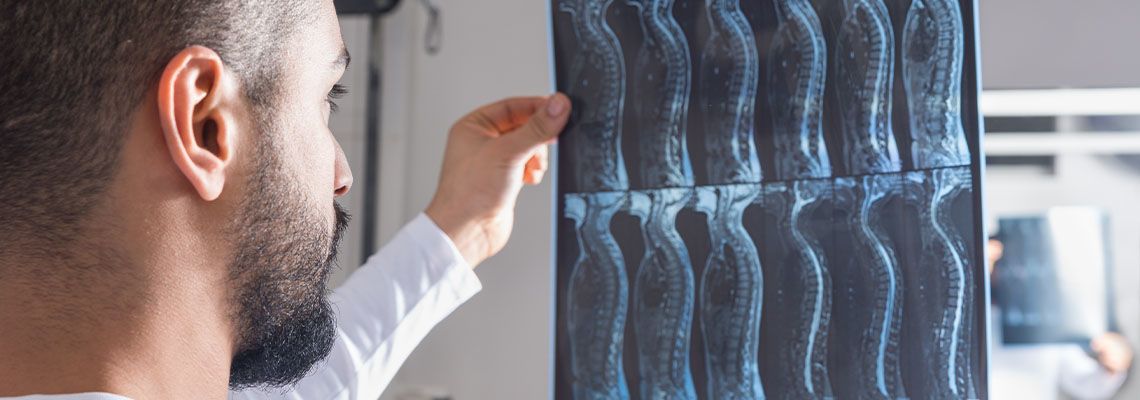
What Evidence Helps Prove a Brain or Spinal Injury Claim?
Suffering a brain or spinal injury can turn life upside down. Recovery is often long, expensive, and emotionally exhausting—and legal action may be necessary to recover compensation for your losses.
At Downs McDonough & Foley, LLC, in Durango, Colorado, we help people who’ve been harmed in serious accidents understand what proof can strengthen their spinal injury claim and help hold the responsible party accountable.
What is Considered a Brain or Spinal Injury?
Brain and spinal injuries are often some of the most severe types of trauma. They typically involve long-term medical care, can result in permanent disability, and may drastically affect one’s ability to work or even function independently.
Common causes include:
Vehicle collisions: These are among the leading causes of traumatic brain injuries (TBIs) and spinal cord injuries.
Falls: Especially in workplaces or on unsafe property, falls can result in damage to the brain or spinal cord.
Violence or assaults: Intentional acts can result in serious trauma.
Sports injuries: High-impact or contact sports carry significant risks, especially for youth.
Medical malpractice: Surgical errors or improper treatment can sometimes lead to lasting damage to the brain or spine.
Proving these injuries in a legal case requires thorough documentation, consistent medical follow-up, and evidence that clearly links the injury to the incident in question.
Medical Evidence Is Foundational
When it comes to a brain or spinal injury claim, medical records are often the cornerstone of the case. They provide the proof needed to show the injury exists, its severity, and its connection to the incident.
Types of medical evidence that support your claim:
Emergency room records: These often include critical first observations made right after the injury occurred.
Imaging results: MRIs, CT scans, and X-rays help demonstrate internal damage not visible from the outside.
Specialist evaluations: Neurologists, orthopedists, and neurosurgeons may offer information about long-term impacts and future treatment needs.
Physical therapy records: These show how the injury has limited your mobility or strength over time.
Prescription histories: Ongoing medications, especially for pain management or neurological symptoms, support the argument for long-term care needs.
Medical evidence is essential not only for proving injury but also for calculating current and future treatment costs, an important part of any spinal injury claim.
Consistent Treatment Builds Credibility
Staying consistent with medical care can make or break your case. Gaps in treatment may suggest the injury isn’t as serious as claimed, while ongoing visits help paint a clear picture of the injury’s effects over time.
Consistent care matters for several reasons. It shows you're taking the injury seriously and builds a detailed medical timeline. This strengthens your claim's value and prevents insurers from arguing that recovery has been reached.
If you're pursuing a spinal injury claim, staying active in your care is just as important legally as it's medically.
Testimony Adds Human Depth to the Case
While medical records lay the groundwork, testimony—both from professionals and those close to you—helps fill in the human impact.
Key sources of testimony may include:
Medical professionals: Doctors or therapists may testify about your prognosis, limitations, and treatment needs.
Vocational experts: These professionals can explain how the injury affects your ability to work or return to your former job.
Family members or close friends: People close to you can describe the emotional, physical, and behavioral changes they've witnessed.
You, the injured person: Your own statement can be powerful, giving voice to how the injury has changed your daily life.
This testimony is especially helpful in spinal injury claims where symptoms may not always show up in scans—such as chronic pain or mental fatigue.
Accident Reports Establish the Facts
To hold another party liable, your spinal injury claim must clearly show what caused the injury and who was at fault. Accident reports—whether from the police, workplace, or private investigators—help set the record straight.
Examples of helpful documentation include:
Police reports: Often provide an objective overview of what happened, who was involved, and any citations issued.
Workplace injury forms: These may contain witness statements and details about safety violations.
Incident reports from property owners: Useful in slip and fall cases or injuries on private premises.
Dash cam or surveillance footage: Can sometimes be retrieved to show the incident as it happened.
These records help prove liability and offer a timeline that supports the rest of your evidence.
Proof of Financial Losses Supports Compensation
A spinal injury claim doesn’t just revolve around medical harm—it also involves financial harm. Lost wages, future earning capacity, and home modification costs are all relevant.
Documents that support financial damages include:
Pay stubs and tax returns: These help calculate lost income and earning potential.
Medical bills and receipts: Itemize both out-of-pocket and insurance-covered costs.
Invoices for home care or assistive devices: These may include ramps, wheelchairs, or in-home nursing.
Quotes for future care: Expert projections for therapy, surgery, or long-term rehabilitation.
Mileage logs for medical appointments: Travel costs can add up and are often overlooked.
Bringing a well-supported spinal injury claim requires proving not only what happened, but also how it continues to impact your financial stability.
Photographs and Videos Can Show the Severity
Images provide a visual context that documents alone can’t. Photos or videos taken at the scene of the injury or during your recovery can offer powerful support to your spinal injury claim.
Ways visual evidence helps:
Scene photos: May show hazardous conditions or unsafe environments
Vehicle damage: Can support the severity of impact in car accident cases
Injury progression photos: Document swelling, scarring, or the use of mobility aids
Day-in-the-life videos: Can illustrate challenges with daily activities such as walking, dressing, or getting in and out of bed
These visuals often resonate more with juries and insurers than clinical records alone.
Psychological and Emotional Impacts Must Be Addressed
Psychological and emotional impacts must be addressed. Brain and spinal injuries often lead to emotional consequences that should be compensated as well. Mental health records and personal accounts can support this part of your spinal injury claim.
Supporting evidence for emotional harm may include mental health evaluations, such as diagnoses of PTSD, depression, or anxiety, and medication records, including prescriptions for psychological symptoms or sleep issues.
Therapist notes can provide information about emotional recovery and relationship changes. Personal journals or logs offer written accounts of pain, fear, or emotional distress, while family testimony can provide observations about mood changes, isolation, or irritability.
Emotional trauma is often invisible but very real—and may greatly influence a settlement or trial outcome.
Expert Witnesses Can Clarify Technical Details
Some injuries or accident types are so complicated that an expert witness may be necessary to break things down in a way that makes sense to a jury.
Examples of professionals who may help include:
Accident reconstructionists: To explain how the injury likely occurred
Biomechanical engineers: To assess the forces involved in the accident
Life care planners: To estimate long-term medical needs and living assistance
Economists: To project future financial losses related to the injury
These professionals can help translate technical information into clear facts that support your spinal injury claim.
The Connection Between the Incident and the Injury Must Be Clear
It’s not enough to show you were injured—you must also show that the injury was directly caused by the accident. This is known as causation, and it’s key to any successful spinal injury claim.
Causation is often proven through early medical records showing the timing of symptoms, the absence of similar prior injuries or health issues, medical opinions linking the incident to the injury, and timely complaints made at the scene or shortly after.
When causation is established, it becomes much harder for the opposing side to argue that the injury was due to something else.
Reach Out to Our Firm
If you're considering legal action for a brain or spinal injury claim, time isn't on your side. Medical records can be lost, witnesses may forget details, and insurers may try to settle early and for less than you need.
At Downs McDonough & Foley, LLC, we’ve worked with people facing these challenges every day. We're ready to help you collect the evidence that matters and pursue fair compensation for your spinal injury claim.
We represent individuals across Durango, Colorado; Telluride, Colorado; Pagosa Springs, Colorado; Cortez, Colorado; and the Four Corners area. Call today for a consultation and let’s discuss your case.

